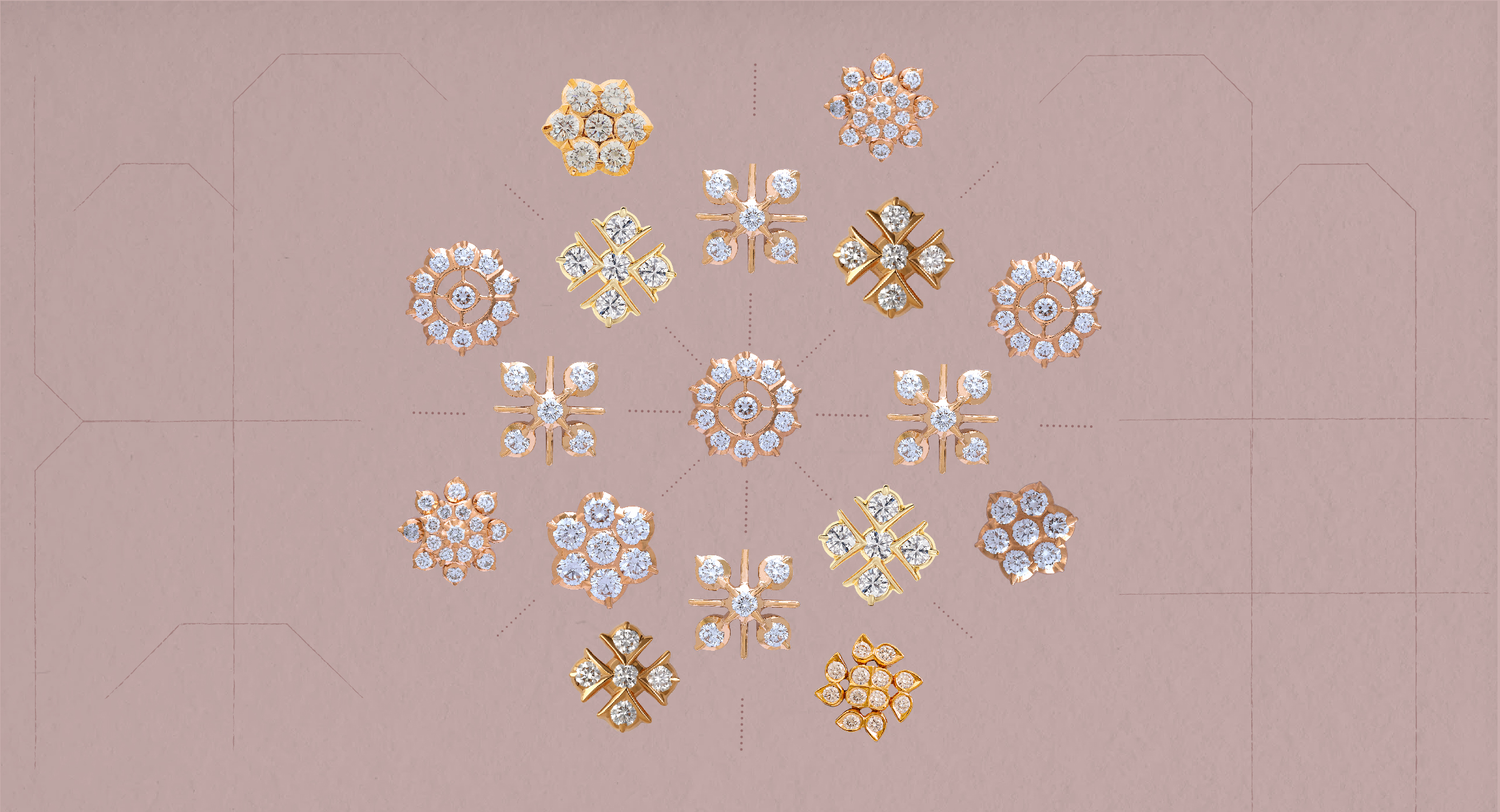Natural Diamonds Meet Southern Charm
We explore what gives the Vaira Thodu, elegant floral natural diamond studs, their covetable status

India’s long-lasting patronage of fine jewels is about more than just a love affair with decadence and beauty. While the glittering allure of precious stones do further their appeal, oftentimes, jewellery is also integral to the values and customs of varied communities. The culturally vibrant country that India is, there are plenty of examples to show for, wherein a small piece of jewellery, crafted in the finest of natural diamonds, holds within it generations worth of traditions, beliefs and stories. One such symbol is the Vaira Thodu, meaning diamond earrings, from south India, especially popular in Tamil Nadu, Andhra Pradesh and Karnataka. Adopted and popularised by De Beers as the Nakshatra earring in the late 1990s in India, this design has now crossed borders, achieving acceptability and aspiration across all regions of India. The term “Nakshatra”, derived from Sanskrit, signifies the stars, and the vaira thodu earrings are symbolic of the celestial bodies.
It’s easy to identify these real diamond studs even if you aren’t familiar with its official moniker due to its hexagonal shape that comes together to mimic a flower. A classic design with a timeless quality, it has long been a staple in the wardrobes of women from the southern regions of the country. Though its origins are not known, it is believed that the earrings evolved from the custom of adorning oneself with garlands of jasmine, chrysanthemum, hibiscus and lotus.

A tale of tradition
Amarendran Vummidi, managing partner of Vummidi Bangaru Jewellers explains that wearing this seven-diamond earring is seen as a symbol of prosperity in the community. “Every family will recollect the history of the vaira thodu in their house with nostalgia. Their significance goes beyond mere ornamentation — it is believed to bring good luck to the families and elevates their perceived status,” he carries on. Shreedevi Deshpande Puri, creative consultant at Ganjam adds that it is a custom to gift these earrings to the bride for her wedding. “Vaira thodu earrings are amongst the most important pieces given to the bride, sometimes passed down from a grandmother or mother, but most often made specially for the bridal trousseau.”

Flower power: Spiritual and Cultural Significance of Vaira Thodu Diamond Earrings
While the perfectly symmetrical hexagonal shape resembling a flower gives the earrings its signature look, it’s more than just a design element, and holds meaningful significance. Puri explains that the specific floral inspiration for the vaira thodu is the lotus, giving it its common nickname, the kamal earrings. Lotus, associated with the Goddess of wealth Lakshmi, is a symbol of fertility, rootedness and purity, thereby giving the earring its spiritual significance.


The perfectly symmetrical hexagonal shape of these diamond earrings gives it the appearance of a flower, and is its signature look. Images courtesy of Prince Jewellery and NAC.
The earrings are typically composed of seven natural solitaire diamonds to denote the seven chakras, according to Vummidi. “Just like the chakras are connected, the diamonds are also connected to each other.” Depending on who you ask, some also believe that the seven diamonds represent the seven Carnatic musical notes, the seven seas, the seven continents, the seven wonders of the world, and the seven colours of the rainbow. In some stories, the seven natural diamonds are said to depict the seven days of a week, making the earring a piece of everyday jewellery. Some vaira thodus comprise five or nine petals (or diamonds) instead of the customary seven, and can also be turned into danglers with the addition of a jhinki or jhumki tassels.
The making of an heirloom: Craftsmanship and Symbolism of Vaira Thodu Diamond Earring
It is its simple sophistication that gives these earrings their significance. Puri adds that since natural diamonds signify brilliance and purity, they give a special characteristic to these traditional earrings. To achieve the perfect look, seven round brilliant-cut natural diamonds are matched for size, cut, colour, clarity and caratage. These are then set in a perfect geometrical pattern with a single diamond in the centre and six diamonds arranged around it.

These diamond studs are made in the south Indian style of closed setting. The base plate is hand-cut to define the form with the side walls carefully constructed keeping the precise size and height of the diamonds. The layers are fused together to form the ‘ghat’ in a traditional kiln. Puri reveals that before the natural diamonds are placed, highly polished silver foil is placed at the base of the setting. The setting, however, is using 24kt gold foil and using a gentle tapping process called ‘masse’ which spreads the metal onto the edge of the diamonds to hold them. Once this is done, fine hand-chiselling gives the piece its ultimate brilliance. The entire piece is hand polished using various polishing threads and a burnishing tool.

Vummidi adds that while the traditional method of crafting the vaira thodu remains untouched, artisans are now turning to technology such as pneumatic chiselling, precision hammering, microscopic setting and cutting techniques to achieve seamless surfaces of the closely set natural diamonds. “This blends traditional elegance with contemporary sophistication,” he carries on. It’s this marriage of something old with something new that gives these earrings their enduring appeal through generations — it has stood the time for its classic, timeless aesthetic that is immune to trends. And that really is the ultimate marker of a true heirloom.
